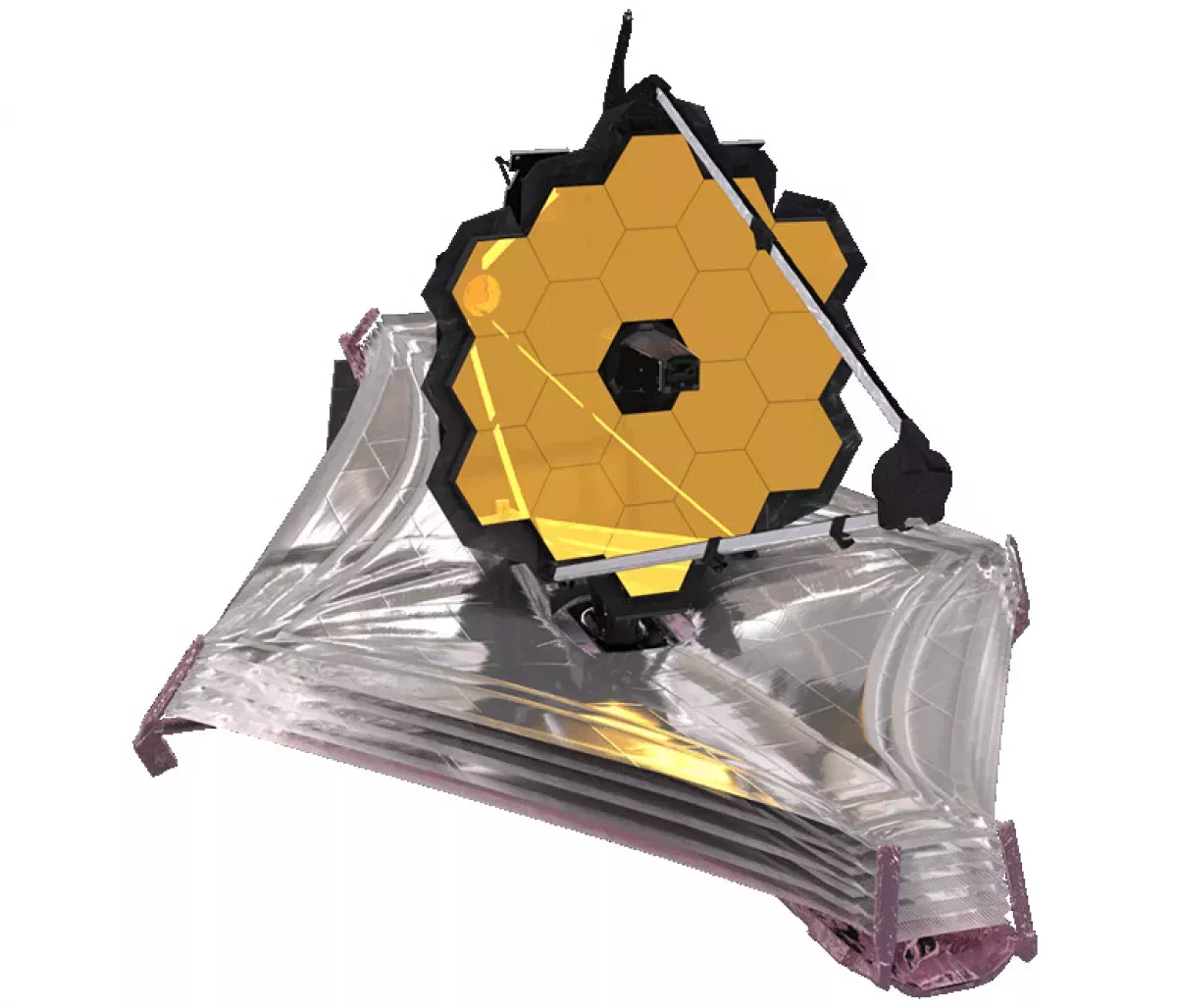The James Webb Space Telescope (JWST) is the largest space telescope, designed for infrared astronomy. Its advanced instruments offer unprecedented resolution and sensitivity, surpassing the Hubble Space Telescope. This enables JWST to observe incredibly distant and faint objects, including the first stars and galaxies. Its capabilities extend to characterizing the atmospheres of potentially habitable exoplanets, significantly advancing our understanding of the universe's origins and the potential for life beyond Earth.
1961: James E. Webb Becomes NASA Administrator
James E. Webb assumed the role of NASA administrator in 1961.
1968: End of James E. Webb's Tenure as NASA Administrator
James E. Webb concluded his tenure as NASA administrator in 1968.
1972: Formal Start of the Hubble Space Telescope Project
The Hubble Space Telescope project formally commenced in 1972 with an estimated development cost of US$300 million.
1984: Cost Estimate for Next-Generation Infrared Observatory
In 1984, the Space Science Board conducted a study estimating the cost of constructing a next-generation infrared observatory in orbit. Their projection placed the expense at US$4 billion.
1989: Development of the Hi-Z Telescope Concept
The development of the Hi-Z telescope concept, an early predecessor to the James Webb Telescope, took place between 1989 and 1994.
1990: Launch of the Hubble Space Telescope
The Hubble Space Telescope was launched into orbit in 1990.
1993: Corrective Mission for Hubble Space Telescope Optics
NASA conducted the STS-61 Space Shuttle mission in 1993 to correct the flawed optics of the Hubble Space Telescope. This mission involved replacing the telescope's camera and installing a retrofit for its imaging spectrograph to address the spherical aberration in its primary mirror.
1994: Formation of the HST & Beyond Committee
The HST & Beyond Committee was established in 1994 to explore potential missions and programs for optical-ultraviolet astronomy in space for the early 21st century.
1994: Completion of the Hi-Z Telescope Concept
The Hi-Z telescope concept, a 4-meter aperture infrared telescope intended for a distant orbit, was finalized in 1994.
1996: HST & Beyond Committee Report
In 1996, the HST & Beyond Committee released a report exploring the concept of a larger, colder, infrared-sensitive telescope that could peer back in time to the formation of the first galaxies. This report emphasized the scientific need for a telescope capable of observing in infrared wavelengths, which the existing Hubble Space Telescope couldn't do effectively due to its own infrared emissions.
1996: Initial Designs for the Next Generation Space Telescope
The initial design concepts for the telescope, then known as the Next Generation Space Telescope, were initiated in 1996.
1999: Selection of Lockheed Martin and TRW for NGST Concept Studies
NASA selected Lockheed Martin and TRW in 1999 for preliminary concept studies of the NGST.
1999: Commissioning of Concept Studies for the Next Generation Space Telescope
Two concept studies for the Next Generation Space Telescope were commissioned in 1999, targeting a potential launch in 2007 with a budget of US$1 billion.
2000: Preparation for the Astronomy and Astrophysics Decadal Survey
In preparation for the 2000 Astronomy and Astrophysics Decadal Survey, NASA further developed the scientific program for the Next Generation Space Telescope, refining its goals of studying galaxy formation and searching for exoplanets.
2000: NGST Receives Highest Ranking in Decadal Survey
The Next Generation Space Telescope (NGST) received the highest ranking in the 2000 Decadal Survey, highlighting its importance as a scientific priority.
2002: NASA Names Telescope After James E. Webb
In 2002, NASA administrator Sean O'Keefe named the telescope after James E. Webb, who served as the administrator of NASA from 1961 to 1968.
2003: ESA Approves Participation
In 2003, ESA's member states formally endorsed the agency's participation in the construction and launch of the James Webb Space Telescope, solidifying their commitment to the project.
2003: Space Telescope Science Institute Selected to Operate James Webb Telescope
In 2003, the Space Telescope Science Institute (STScI) was chosen to operate the James Webb Telescope, responsible for its scientific operation and data distribution.
2004: European Space Agency's Contribution to the James Webb Space Telescope
The European Space Agency (ESA) pledged approximately €300 million towards the James Webb Space Telescope project in 2004, including providing the launch vehicle.
August 2005: Replanning of the James Webb Space Telescope Project
The James Webb Space Telescope project underwent a significant re-planning phase in August 2005 due to cost overruns. Key changes included adjustments to integration and testing procedures, a 22-month launch delay (from 2011 to 2013), and the elimination of full-system testing at certain wavelengths.
2005: Life-Cycle Cost Estimate for the James Webb Space Telescope
In 2005, the life-cycle cost for the James Webb Space Telescope was estimated to be around US$4.5 billion.
2005: Extension of the Hubble Space Telescope Mission
The HST & Beyond Committee recommended extending the Hubble Space Telescope mission to 2005.
2005: Redesign of the James Webb Telescope
The James Webb Telescope underwent a major redesign in 2005.
April 2006: Independent Review of the James Webb Space Telescope Project
Following the re-planning efforts, the James Webb Space Telescope project underwent an independent review in April 2006.
2006: Hubble Space Telescope Cost Reaches US$9 Billion
By 2006, the overall cost of the Hubble Space Telescope, including instruments and servicing missions, had reached at least US$9 billion.
2006: Inflation-Adjusted Cost Estimate
The 1984 cost estimate of US$4 billion, when adjusted for inflation to reflect 2006 dollars, amounted to US$7 billion.
January 2007: Technology Development Milestones
In January 2007, nine out of ten technology development items for the James Webb Space Telescope successfully passed a Non-Advocate Review, signifying their maturity and reduction of project risks.
April 2007: MIRI Cryocooler Milestone
The final technology development item, the MIRI cryocooler, reached its technology maturation milestone in April 2007, paving the way for the project's detailed design phase.
May 2007: Cost Control
As of May 2007, the James Webb Space Telescope project remained within budget.
2007: Canadian Space Agency's Contribution to the James Webb Space Telescope
The Canadian Space Agency (CSA) committed CA$39 million to the James Webb Space Telescope project in 2007.
2007: Original Mechanical Integration Target
The initial timeline for the James Webb Space Telescope project aimed to achieve mechanical integration by 2007. However, this milestone faced delays and was eventually accomplished in 2019.
March 2008: Preliminary Design Review Success
The James Webb Space Telescope project successfully completed its Preliminary Design Review (PDR) in March 2008.
April 2008: Non-Advocate Review Passed
The James Webb Space Telescope project passed the Non-Advocate Review in April 2008, indicating progress and adherence to requirements.
2008: Preliminary Design Review and Construction Confirmation
By 2008, the James Webb Space Telescope project had progressed to the preliminary design review stage and received formal confirmation for construction. By this point, over US$1 billion had been invested in developing the telescope, and the total budget was projected to be around US$5 billion.
March 2009: Integrated Science Instrument Module Review
The Integrated Science Instrument Module for the James Webb Space Telescope successfully passed review in March 2009.
October 2009: Optical Telescope Element Review Completed
The Optical Telescope Element of the James Webb Space Telescope successfully completed its review in October 2009.
January 2010: Sunshield Review Completed
The sunshield designed for the James Webb Space Telescope underwent and passed a successful review in January 2010.
April 2010: Mission Critical Design Review Success
The James Webb Space Telescope passed the technical evaluation of its Mission Critical Design Review (MCDR) in April 2010, indicating its ability to meet mission requirements.
2010: Scientific Concerns over Costs and Delays
Around 2010, as the James Webb Space Telescope project faced mounting expenses and schedule setbacks, concerns began to surface within the scientific community. Scientists expressed worry that the escalating budget of the telescope might be diverting resources from other valuable space science programs. This concern was highlighted in a 2010 article in the journal Nature, which dubbed the James Webb Space Telescope "the telescope that ate astronomy." Despite these anxieties, NASA remained steadfast in its defense of the program's budget and timeline to Congress.
2010: Planned Launch Date for James Webb Space Telescope
At this time, the planned launch date for the James Webb Space Telescope was set for 2010.
2010: Critical Design Review Passed, Schedule and Cost Concerns
During the summer of 2010, the James Webb Space Telescope mission successfully passed its Critical Design Review (CDR), receiving excellent assessments on all technical fronts. However, concerns arose due to schedule slips and cost overruns. These issues prompted Maryland U.S. Senator Barbara Mikulski to request an external review of the project.
July 2011: House Committee Moves to Cancel Project
In July 2011, the United States House of Representatives' appropriations committee on Commerce, Justice, and Science made a move to cancel the James Webb Space Telescope project. Their proposal involved an FY2012 budget that cut US$1.9 billion from NASA's overall budget, with approximately a quarter of this reduction intended for the James Webb project. At this point, US$3 billion had been spent, and 75% of the telescope's hardware was already in production.
November 2011: Congress Reverses Cancellation, Caps Funding
In a reversal of the earlier decision to cancel the James Webb Space Telescope project, Congress, in November 2011, decided to continue the project. Instead of cancellation, they implemented a cap on additional funding, limiting it to US$8 billion to complete the project.
2011: Final Design and Fabrication Phase
By 2011, the James Webb Space Telescope project had progressed to its final design and fabrication phase (Phase C).
2011: Initial Planned Launch Date for James Webb Telescope
The initial target for launching the James Webb Telescope was set for 2011.
2012: Delivery of Canadian Contributions for the James Webb Telescope
The Canadian Space Agency delivered its contributions to the James Webb Space Telescope project in 2012, providing equipment for precise pointing and atmospheric characterization of distant planets.
2013: Revised Planned Launch Date for James Webb Telescope
The target launch date for the James Webb Telescope was revised to 2013.
November 2015: Primary Mirror Assembly Begins
Assembly of the hexagonal segments comprising the primary mirror of the James Webb Space Telescope commenced in November 2015, utilizing a robotic arm for this intricate process.
2015: Targeted Launch Year
Following the Mission Critical Design Review, an Independent Comprehensive Review Panel reevaluated the project schedule and set a target launch date for the James Webb Space Telescope in 2015.
2015: Concerns Raised About James Webb's Role in Lavender Scare
In 2015, concerns were raised about James Webb's potential involvement in the lavender scare, a period in the mid-20th century where the U.S. government persecuted homosexuals in federal employment.
2015: Independent Comprehensive Review Panel Findings
The Independent Comprehensive Review Panel (ICRP), led by J. Casani of JPL, concluded that the earliest possible launch date for the James Webb Space Telescope was in late 2015. This projection came with an estimated additional cost of US$1.5 billion, bringing the total to US$6.5 billion.
2015: Assembly of the James Webb Telescope Spacecraft Bus in California
The assembly of the James Webb Telescope spacecraft bus, responsible for supporting and maneuvering the telescope, was finalized in California in 2015.
2015: Discovery of Star KIC 8462852
The star KIC 8462852, notable for its unusual light patterns, was discovered in 2015. It's been suggested that the James Webb telescope could be used to learn more about this star.
February 2016: Primary Mirror Assembly Completed
On February 3, 2016, the assembly of the James Webb Space Telescope's primary mirror, consisting of hexagonal segments, was successfully finished.
March 2016: Secondary Mirror Installation
On March 3, 2016, the secondary mirror of the James Webb Space Telescope was installed.
November 2016: Telescope Construction Completed
Construction of the James Webb Space Telescope reached completion in November 2016, marking a significant milestone and the start of rigorous testing procedures.
2016: Completion of James Webb Telescope Construction
The construction of the James Webb Telescope was completed in 2016.
November 2017: Director's Discretionary Early Release Science Programs Selection
In November 2017, the Space Telescope Science Institute announced 13 Director's Discretionary Early Release Science programs, aiming to gather observations during the first five months of Webb's operation.
March 2018: Launch Postponed, Cost Review Pending
Citing the need for more time, NASA announced on March 27, 2018, a postponement of the James Webb Space Telescope launch to May 2020 or later. This decision was made in consultation with the European Space Agency (ESA), and a definitive cost estimate was to be determined once a new launch window was established.
March 2018: Launch Delayed, Sunshield Issue
NASA announced a postponement of the James Webb Space Telescope's launch in March 2018, pushing it back by an additional two years to May 2020. This delay stemmed from a mishap during a practice deployment where the telescope's sunshield tore, coupled with insufficient tension in the sunshield's cables.
June 2018: Launch Further Delayed
In June 2018, NASA made the decision to further delay the launch of the James Webb Space Telescope by an additional 10 months, moving the target to March 2021. This decision followed an assessment by an independent review board convened after a test deployment failure in March 2018.
2018: Gregory L. Robinson Appointed Program Director
Gregory L. Robinson took on the role of director for the James Webb Space Telescope program in 2018. His leadership proved instrumental in significantly enhancing the program's schedule efficiency, which measures the timely completion of tasks. Under his guidance, the schedule efficiency surged from 50% to an impressive 95%.
2018: James Webb Telescope Sunshield Testing Delays
In 2018, during the deployment testing phase, the James Webb Telescope encountered delays due to accidental tears in the delicate film structure of the sunshield.
2018: Potential Launch Delay
The Independent Comprehensive Review Panel, tasked with assessing the James Webb Space Telescope project, acknowledged the possibility of the launch being delayed until 2018.
August 2019: Mechanical Integration Completed
August 2019 marked a significant achievement in the James Webb Space Telescope project as the mechanical integration of the telescope was finalized. Notably, this accomplishment occurred 12 years later than originally planned in the project timeline.
2019: Mission Cost Cap Increased
In 2019, the mission cost cap for the James Webb Space Telescope project was raised by US$800 million. This adjustment reflected the ongoing work and resources required to ensure the mission's success.
May 2020: Launch Window Beyond May 2020
After a reassessment in March 2018, the launch of the James Webb Space Telescope was rescheduled to take place no earlier than May 2020. This timeframe provided additional leeway for final preparations and coordination.
2020: Further Inflation-Adjusted Cost Estimate
When factoring in inflation to 2020 dollars, the 1984 cost estimate of US$4 billion reached US$10 billion.
March 2021: Revised Launch Target
Following a delay announced in June 2018, the target launch date for the James Webb Space Telescope was shifted to March 2021.
March 2021: Selection of Cycle 1 GO Programs Announced
On March 2021, the selection of Cycle 1 GO programs for the James Webb Space Telescope was announced, with 266 programs approved out of 1,173 submitted proposals.
September 2021: Telescope Departs California
On September 26, 2021, a ship transporting the James Webb Space Telescope embarked on its journey from California.
October 2021: Telescope Arrives in French Guiana
After its journey from California, the ship carrying the James Webb Space Telescope successfully traversed the Panama Canal and reached French Guiana on October 12, 2021.
December 2021: James Webb Telescope Completes First Mid-Course Correction and Deploys Antenna
About 12 hours after its launch on December 25, 2021, the James Webb Telescope successfully completed its first mid-course correction using its primary rockets. On the second day, the high-gain communication antenna was automatically deployed.
December 2021: James Webb Telescope Undergoes Second Mid-Course Correction and Sunshield Deployment Begins
On December 27, 2021, the James Webb Telescope successfully completed its second mid-course correction maneuver. The multi-day process of deploying the telescope's critical sunshield began on December 28, 2021.
December 2021: James Webb Telescope Momentum Flap Deployed
On December 30, 2021, mission controllers successfully deployed the aft "momentum flap" on the James Webb Telescope. This device helps maintain the telescope's orientation by counteracting solar pressure on the sunshield, which conserves fuel.
December 2021: Launch of the James Webb Telescope
The James Webb Telescope was launched in December 2021 from French Guiana aboard an Ariane 5 rocket.
December 2021: James Webb Telescope Successfully Launched
The James Webb Telescope was launched on December 25, 2021, at 12:20 UTC aboard an Ariane 5 rocket from the Guiana Space Centre. The telescope's power supply was confirmed, marking the start of its deployment phase.
2021: Launch and Final Cost
After experiencing delays due to the COVID-19 pandemic, which caused pauses in launch windows during 2020, the James Webb Space Telescope was successfully launched at the end of 2021. The total cost of the project reached just under US$10 billion.
2021: Integration of Spacecraft Bus with James Webb Telescope
The spacecraft bus was integrated with the James Webb Telescope leading up to its launch in 2021.
January 2022: James Webb Telescope Mid Booms Extended and Secondary Mirror Deployed
Between December 31, 2021, and January 4, 2022, the ground team successfully extended the two telescoping "mid booms" on the James Webb Telescope. On January 5, 2022, mission control confirmed the successful deployment and locking of the telescope's secondary mirror with a precision of about one and a half millimeters.
January 2022: James Webb Telescope Begins Mirror Alignment
On January 12, 2022, while the James Webb Telescope was still in transit to its final destination, the process of aligning its mirrors began. The primary mirror segments and the secondary mirror were moved from their secure launch positions to prepare for focusing.
January 2022: James Webb Telescope Completes Final Course Correction
On January 24, 2022, at 2:00 p.m. Eastern Standard Time, the James Webb Telescope underwent its third and final course correction. This maneuver successfully placed the telescope into its intended halo orbit around the Sun-Earth L2 point, marking the end of its major travel adjustments.
January 2022: James Webb Telescope Primary Mirror Wings Successfully Deployed
On January 7 and 8, 2022, the James Webb Telescope team successfully deployed and locked the port-side and starboard-side mirror wings. These wings, containing the primary mirror segments, were folded for launch and had to be unfolded in space. This marked the completion of the observatory's structural deployment.
February 2022: James Webb Telescope Detects First Photons and Completes Phase 1 Alignment
On February 3, 2022, NASA announced that the James Webb Telescope's Near Infrared Camera (NIRCam) had detected its first photons. By February 11, 2022, the telescope had nearly finished phase 1 of its alignment process, with each segment of its primary mirror capturing images of the target star HD 84406. Phase 1 alignment was successfully completed on February 18, 2022, followed by the completion of phases 2 and 3 a week later. This achievement signified that all 18 mirror segments were functioning together.
June 2022: Micrometeoroid Strike on James Webb Telescope Mirror
Between May 23 and 25, 2022, the James Webb Telescope's C3 mirror segment was hit by a micrometeoroid, the fifth and largest impact since launch. This event was reported on June 8, 2022.
July 2022: Robinson Retires
After a distinguished 33-year tenure at NASA, Gregory L. Robinson, the director of the James Webb Space Telescope program, announced his retirement in July 2022. This decision followed the successful commissioning of the telescope, marking the beginning of its operational phase and the transmission of its inaugural data.
July 2022: First Full-Color Images and Spectroscopic Data Release
July 2022 marked the official start of Webb's general science operations with the release of its first full-color images and spectroscopic data.
July 2022: James Webb Space Telescope Commissioning Completion
The James Webb Space Telescope completed its commissioning phase in July 2022 and was declared ready to commence full scientific operations.
July 2022: First Image Release of the James Webb Telescope
The first image captured by the James Webb Telescope was unveiled to the public in July 2022.
August 2022: Discovery of High Redshift and Luminous Galaxies
In August 2022, following the release of the first Webb images, several preprint papers reported the discovery of high redshift and very luminous galaxies, potentially dating back to 235-280 million years after the Big Bang.
September 2022: Primordial Black Holes Proposed to Explain Early Galaxies
In September 2022, primordial black holes were suggested as a possible explanation for the unexpectedly large and early galaxies observed by the James Webb Space Telescope.
2022: NASA Clears James Webb of Lavender Scare Involvement
In 2022, NASA released a report based on over 50,000 documents stating they found no evidence directly linking James Webb to any actions related to the firing of individuals based on their sexual orientation during his time at the State Department or NASA.
May 10, 2023: Announcement of Cycle 2 GO Program
On May 10, 2023, the Cycle 2 GO program for the James Webb Space Telescope was announced, marking another round of observation proposals and allocations.
June 2023: Detection of Organic Molecules 12 Billion Light-Years Away
In June 2023, the James Webb Space Telescope detected organic molecules located 12 billion light-years away in a galaxy named SPT0418-47.
September 2023: Astrophysicists Challenge Standard Model of Cosmology
In September 2023, based on recent studies conducted using the James Webb Space Telescope, two astrophysicists raised questions about the established Standard Model of Cosmology.
2023: Inflation-Adjusted Cost
The estimated total budget of US$5 billion for the James Webb Space Telescope project in 2008, when adjusted for inflation to reflect 2023 dollars, amounted to US$7.8 billion.
May 2024: Discovery of the Most Distant Known Galaxy, JADES-GS-z14-0
In May 2024, the James Webb Space Telescope identified the most distant galaxy known to date, JADES-GS-z14-0, dating back to just 290 million years after the Big Bang.
May 2024: Detection of the Farthest Known Black Hole Merger
The James Webb Space Telescope detected the most distant known black hole merger in May 2024, occurring within the galaxy system ZS7 just 740 million years after the Big Bang.
Mentioned in this timeline
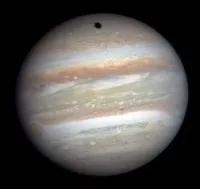
Jupiter is the fifth and largest planet from the Sun...
California is a U S state on the Pacific Coast...
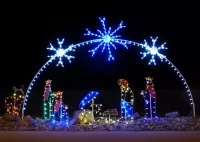
Christmas is an annual festival celebrated on December th commemorating...
NASA the National Aeronautics and Space Administration is an independent...
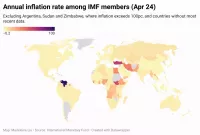
Inflation in economics signifies an increase in the average price...
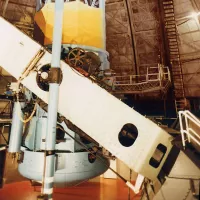
A telescope is an instrument used to observe distant objects...
Trending

Eugenio Derbez is a highly successful Mexican actor and comedian renowned for his work in both Spanish and English language...

2 months ago Angela Bassett As Queen Ramonda Stuns At Vogue World 2025; Black Panther Tribute.

8 months ago Tesla Board Initiated CEO Search to Replace Elon Musk Amidst Leadership Concerns.

9 months ago Milo Manheim and Liz Gillies bond in Little Shop of Horrors, extend run.

1 month ago Alexander Skarsgård reminds Miriam Margolyes of their meeting; addresses sexuality question, states 'not really' gay.
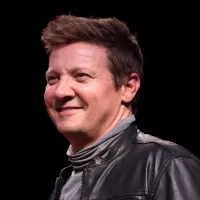
2 months ago Jeremy Renner faces accusations of ICE threat and misconduct controversy in Hollywood.
Popular

Stranger Things created by the Duffer Brothers is a popular...

XXXTentacion born Jahseh Dwayne Ricardo Onfroy was a controversial yet...

Kelsey Grammer is an accomplished American actor producer and singer...

Candace Owens is an American conservative political commentator and author...

Bernie Sanders is a prominent American politician currently serving as...

Melania Trump a Slovenian-American former model has served as First...
